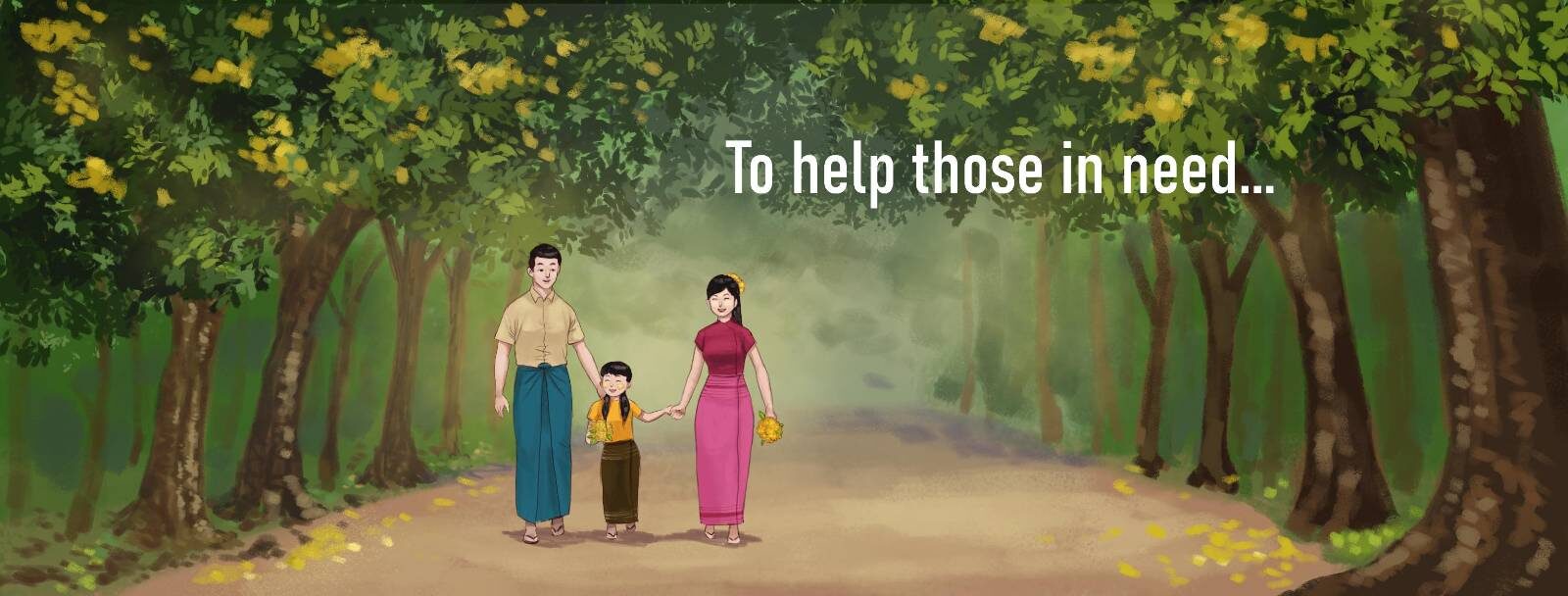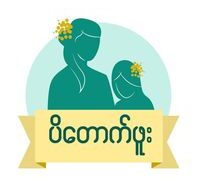We all know the Ahlawbum battle in which KIA conquered the military base. I don’t think we know the same things though. I know the truth I was positioned there.
Ahlawbum is a very remote place it is hard even to send reinforcements. It was built just before the Myanmar-Chinese border. At that base, a battalion is the base commander. In addition to the Ahlawbum base, there is a Kar Kin Kone and a small base hill close to the main base. I know this because I had to follow the tactical commander there. It was just before the battle. Thank God it wasn’t during our inspection. Otherwise, I would also have to be running.
The primary location of our tactics at that time was the hill inside Kha La Ya 142 in Dawthponeyan. The tactical commander was ordered one day to inspect the Ahlawbum base concerning the defences and to overhaul the shortcomings. Thus, I prepared the necessities and followed the commander to the base. We arose early in the morning and went to Ahlawbum using the side road in front of Kha Ma Ya 438. The Commander of Kha Ma Ya 438 prepared motorcycles for us as it was appropriate for the road we were using. As soon as we drove onto the road, we crossed a creek that was as deep as our thighs. We had to push our cycles as the water got into the exhaust pipe. We rode on the cycles as much as we can but it was very muddy in the rainy season. The trip strained us more than it should have since we had to push the cycles up some slopes even though we weren’t overloaded. The cycles were painless in the beginning, but later, we had to leave them as we were forced to climb some cliffs. If not, the cycles would be riding us. We left in the morning but arrived at Ahlawbum in the evening.
The base commander welcomed us just before the base of the hill. The first thing I noticed at the base was that it was shrouded in mist so thick I could barely see. After we arrived on the hill, it snowed like rain. The whole team was freezing because of the gusty condition. I had to wear the clothes the battalion commander’s PA gave me as I didn’t bring extra clothing. We went there during pretty bad weather.
It was also a place of food scarcity. The base was built in such an isolated place that the people there are starving most of the time. The people there have to eat dry rations, canned food, and vegetables from the plants they grow. It is a rough place for the officers positioned there.“If this base got sieged, it will fall instantly. Reinforcements won’t get here quickly. Even if the reinforcements arrived, they could only be able to collect bodies. I don’t know why they wanted a base here. It would be better to have one or two extra bases around here,” we said to each other.
The tactical commander inspected the base the next day. He instructed everyone to make necessary amends. He took notes about the base and ordered the base commanders and his soldiers about crucial things. Then we went back to Dawthponeyan. The way back is the same as earlier. The road was more backbreaking than when we came. It was so slippery the cycles and the people exchange places back and forth. A few months after our trip, we heard the news that the Ahlawbum base fell. It fell instantly as we predicted. Troops from there had to run for their lives. There were a lot of casualties. The other side took all the ammunition from there. The army suffered heavy losses as you can see from the videos online.
The military prepared to take back the base. There, you would see the incompetence of SAC’s leaders in management and calculation. They instructed the Myo Thit Kha Ma Ya 320 and Momeik Kha Ma Ya 437 for battle. The commander of Kha Ma Ya 320 was Lieutenant Colonel Aung Zaw Htet. He was always undecided on many occasions. He was also very worried about everything. The worst of all was he was timid. I know this because I was in the same battalion as him during my junior years. Because of these incapacities, they lost when they try to take back that base.
The next battalion was Kha Ma Ya 437 from Momeik. It was changed from being under the regional military command to regimental command just a few months ago. They were mostly assigned as security when they were under regional command. They were mostly inexperienced for battle as they didn’t have to join battles much.
The commander who was assigned to those battalions was a tactical commander who arrived there only a few days ago. No matter how high-ranking the officer was, they were not familiar with the lay of the land. Moreover, they didn’t know much about the battalions they were going to command. You would not need to mention his knowledge of his subordinates.
He would be stressed and frustrated about having to take control of an operation just after he was transferred when he wanted to relax. You could see the military’s disregard for their fellow soldiers. It was not strange for them to flee the battle. All of us knew the outcome just from the orders. It was clear as day. The top officers of the command chain were so inept at decision-making.
Anyway, they went to battle. When they were trying to go up 320 Hill, the enemy noticed them because of their lack of time management. So, the enemy followed them in large numbers. What happened after that was never heard in my life. The tactical commander had to run as fast as he could. A bullet grazed his helmet. (It should have gone through the helmet) The battalion commanders and the company commanders also ran for their lives. My friend who was from the same batch told me about his experience, “I was lucky that I am still alive. So many close calls. Bullets were raining left and right. The Sayar from the regiment who fell was very unlucky. The artillery shell dropped right on top of him. The enemy’s counterattacks were really quick too. Everyone had to shoot and run. We went to take back our base but as you saw, we only could run for our lives.” The news were very disheartening.
Only after everything has happened, they tried to blame the battalions and the commanders, saying that the soldiers didn’t follow orders. There were a lot of patients at the Bhamo hospital. Every hall was filled with wounded soldiers. A lot of them were without limbs and some are with blood transfusion sets. Now and then, someone came out of the surgery room moaning in pain. It was such a depressing sight. Many of the soldiers ran in every direction during the battle. Some were found by the Chinese police and returned to us. Some got near the enemy’s camps without any communication. We had to fire our guns to call them back.
In some cases, the wife was offering alms to the monk on the seventh of the husband’s death and suddenly, the dead person got back home wounded. The wife cried thinking he was and ghost and didn’t let him back into the house. One of the guys told me, “I went up the hill from the place of the battle thinking I would find my mates up there. I only see bodies everywhere. I couldn’t perform a proper burial. I could only put a longyi over the dead body. There were a lot of guns but I couldn’t bury them. I could only cover them with leaves to hide them from the enemies. On my way back, I found four of my lost subordinates, so I brought them back with me.” We could only confirm some deaths because of him.
People like him lost in the forest had to hitchhike on the watermelon trucks. There were a lot of deaths. We couldn’t take back their bodies. What’s worse, we lost the formation and couldn’t determine who was dead and who was lost. They couldn’t bury their comrades and the bodies were rotting at the place of the battle. Back at the quarters, it was like hell from the wives and families of the dead crying. They were not sure if their husband was dead or just lost. They didn’t know what to do. They didn’t get closure and only got words of condolence like “I am sorry.” One of the two sisters was pregnant. Both of their husbands died in the battle. We had to resuscitate one of them since they collapsed crying. Everything was like hell.
I had something to say about how the higher-ranking officers think of their fellows. Some of the returnees didn’t have guns anymore. Some carried back guns as much as they can. They didn’t praise who brought back guns but Balme those who couldn’t, “How could you not get back our gun.” There were a lot of actions taken against everyone involved in the lower ranks. They also blamed and took action against those back at the base for not being able to do anything. None of them was glad their comrades came back alive. That’s how much they care about their subordinates.
They also have this habit of ordering everyone to determine responsible parties for the failure and put them on trial. But the one saying that was responsible for it. But the innocents were put on trial. Leaders need to know how much their people are capable of. They should assign the right person to the right job. They shouldn’t worry about everything as they are in a war. Their subordinates always look up to them in battle. They should be aware that their people are waiting for their orders. The leaders on the ground shouldn’t worry much and take care in giving appropriate orders. They should keep calm and give decisive instructions in a short time. They should be brave. Also, they need to train their people to be ready for battle 24/7. Well-trained soldiers will give better results in battles. They also need to have backup plans. There will be a lot of unexpected troubles in a battle. So, it is important to make preparations for unexpected situations. They shouldn’t think they will get the upper hand every time. People who take leadership positions must have leadership skills.
The lives of their subordinates depend a lot on their ability to make decisions in any instance. There are many more lessons you could learn from this event I haven’t talked about yet. I hope some of the things I said could help in winning the revolution.
Yours respectfully,
Htet Myat

